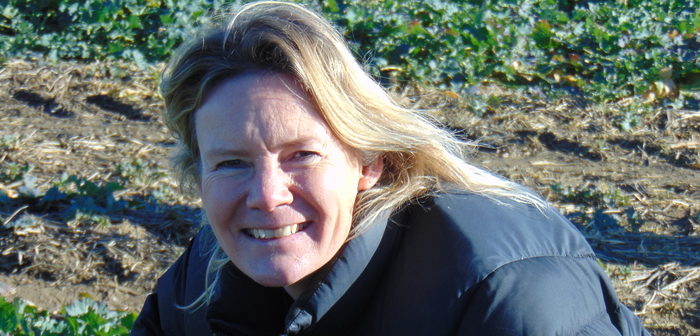Oilseed rape crops across the UK are generally leafier than usual and many will require timely growth regulation to deliver optimum yields this season.
The need for treatment can be assessed by measuring the green area index (GAI) of a crop just before stem extension, typically in late February, says BASF business development manager Clare Tucker.
“GAI is the ratio of green leaf to soil, and its value prior to stem extension is an important predictor of canopy size at flowering and consequent lodging risk.
“This year we have seen many more leafy crops going into the winter due to good drilling conditions, earlier drilling, the open autumn and less flea beetle damage than we saw in the previous two seasons.
“These crops tend to form overly thick canopies at flowering, which limits light penetration and seed production, and will be more likely to lodge.”
BASF has updated its mobile OSR GAI (green area index) app to help growers accurately measure crops and optimise plant growth regulation programmes.
Since its launch in 2011, the app has been downloaded by over 5000 growers and agronomists.
The latest version is compatible with Apple’s iOS 11 mobile operating system, has a fresher design and incorporates key information on timing and rates for Caryx, BASF’s specialist OSR growth regulation product. It can be downloaded from the App Store (itunes.apple.com).
“GAI is measured by taking a photo from directly above the crop, covering about 1m2 using the white bars as measuring aids. The app will then calculate the GAI score automatically,” says Mrs Tucker.
Once the GAI score has been determined, users should click on the “Action Plan” section to access information and advice on PGR requirements.
“GAI can also be estimated by eye. Approximately 50% ground cover equates to a GAI value of 1, and 75% ground cover to a GAI of 2,” says Mrs Tucker.
The GAI measure provides the economic threshold for Caryx use. Crops with a GAI above 0.8 should be sprayed with 0.7-1 litre/ha of Caryx (mepiquat + metconazole) any time between the start of stem extension (typically from mid-March onwards) to yellow bud. Where GAI exceeds 2 the rate should be raised to 1-1.4 litres/ha.
In both cases, the higher dose should be used on tall varieties and/or fertile sites. Reducing lodging and increasing seed number/m2 using Caryx achieves yield increases of up to 0.4t/ha according to ADAS data, says Mrs Tucker.
The product contains enough triazole at the 1.4litre/ha rate to protect crops against light leaf spot attack. However, if the disease is active, tebuconazole at 0.5 litres/ha should be added, she advises.
View from the field
BASF Agronomy managers across England confirm the overall picture of lush crops. There has been recent leaf loss during January but in forward crops, leaf growth will restart in February ready for GAIs assessment towards the end of the month.
South-east based Philip Brown says: “This season there is far more rape in the region, although in Essex probably still not up to historical levels. Crops are relatively forward in line with th comments from elsewhere. Many crops are already starting to extend and there should even be enough for the pigeons this year.”
Hugo Pryce from Norfolk says: “I took some GAIs at the end of January and I was measuring in excess of 2.5. Other crops in the vicinity have bigger canopies than at the same time last year. Feedback would suggest that many agronomists have already identified the potential need/benefit for a PGR on many of crops this spring.”
Northumberland-based Matthew Barnes says: “Perception as the season closed was of big leafy crops that got away nicely, enough to lose the dog in at any rate. While there seems to have been a fair old chunk of leaf die back, most agronomists agreed that GAI 0.8 won’t be hard to find this spring and a PGR will be used.”
Paul Haynes in the south west says: “The general picture is of larger crops. There has been quite a bit of die-back and some pigeon damage recently.”
Andrew Clune in the central south says: “A very open autumn allowed good growth. We are also seeing some dieback/pigeon damage now.”
In the West Midlands, Robin Rose reports most crops are now greening back up. “We saw big crops going into the winter. More pre-Christmas snow and frost than for a few years put the crop back down, but GAI is now anywhere between 1 and 2+. Most agronomists in briefing meetings are talking about the requirement for PGR this spring.”
Scott Milne in Scotland says: “Agronomists are talking up the need for a pgr as crops are similar to last year, when there was a big demand for Caryx and metconazole.”




